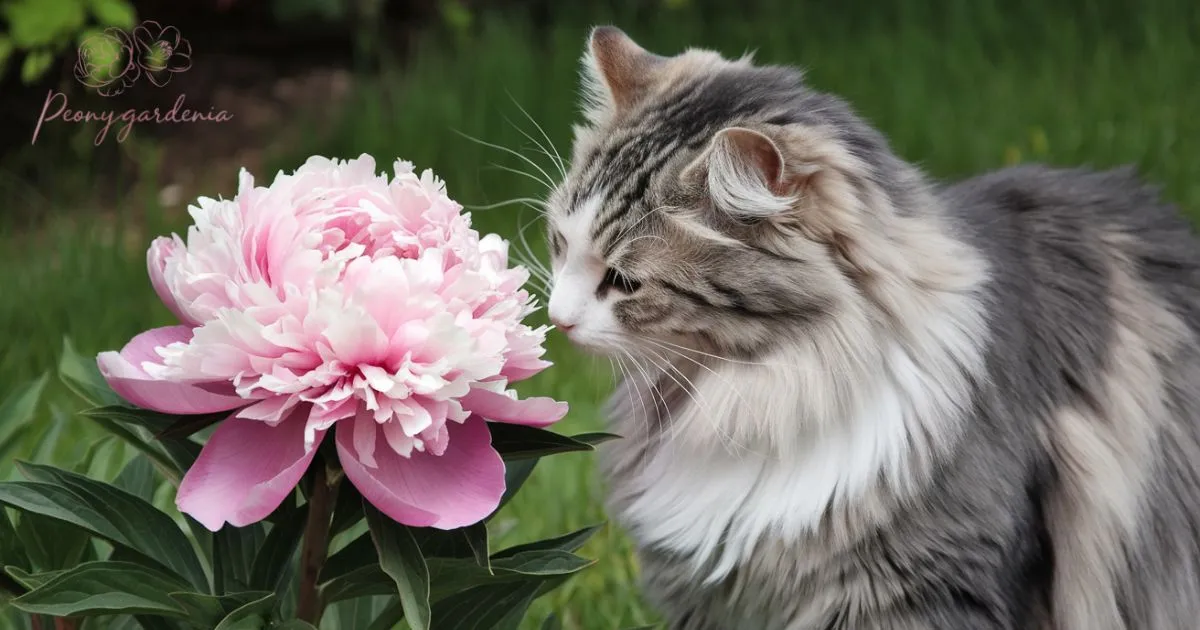Cats are curious creatures, often drawn to the vibrant sights and scents of household plants. However, not all plants are safe for our feline friends. Among these is the beautiful yet potentially harmful peony. Known for its lush blooms, this popular garden plant can pose serious risks to cats if ingested. As responsible pet owners, understanding the safety of plants in your home is crucial for protecting your cat’s health.
In this article, we delve into the relationship between peonies and cats, highlighting the toxic properties of these flowers and the symptoms of poisoning they can cause. Additionally, we explore preventive measures to keep your pets safe and offer recommendations for cat-friendly plant alternatives.
Why Are Peonies Dangerous for Cats?
Peonies contain toxic compounds known as paeonol. This compound is found in the bark and flowers. When ingested by cats, it can cause various health issues. Even small amounts may lead to discomfort and mild poisoning. The toxicity level depends on how much the cat consumes.
Peonies are beautiful, but their risks outweigh their decorative appeal. Curious cats might chew on plants, unaware of the danger. Understanding the harmful effects of peonies will help you protect your furry friend. Awareness and prevention are the first steps toward ensuring your cat’s safety.
Peonies and Their Toxicity to Cats
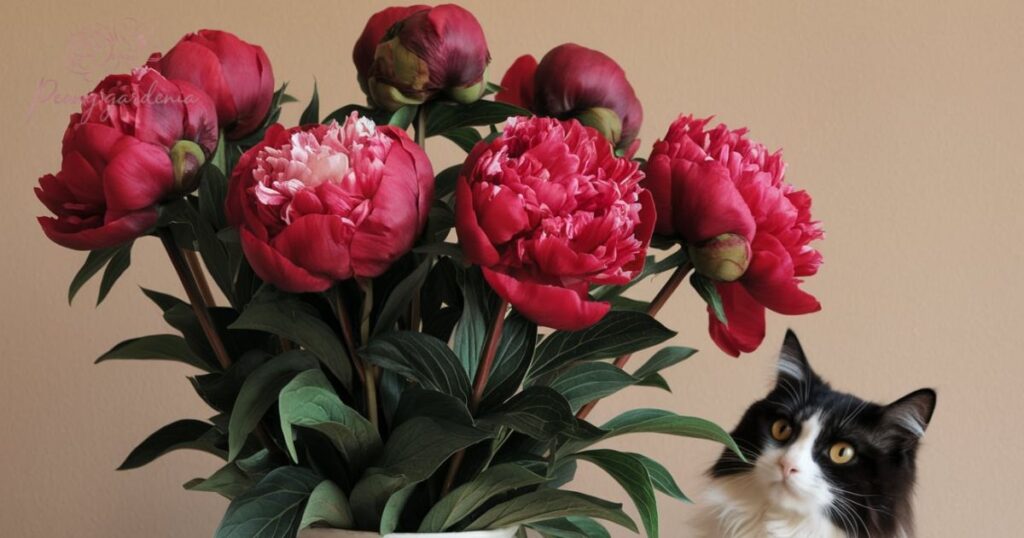
Peonies are popular garden plants, loved for their bright and colorful blooms. However, they can be harmful to cats if ingested. All parts of the plant, including leaves, stems, and flowers, contain toxins. The primary toxin is called paeonol, which can cause digestive problems in cats.
Symptoms may include vomiting, diarrhea, and abdominal discomfort. Even a small amount of ingestion can lead to noticeable issues. For this reason, pet owners should exercise caution when planting peonies or bringing them indoors. Keeping peonies away from curious cats is essential to ensure their health and well-being.
Read More: How Often to Water Peonies
Symptoms of Peony Poisoning in Cats
When a cat consumes any part of a peony, it may display clear signs of poisoning. These symptoms can include excessive drooling, vomiting, and a noticeable lack of appetite. Some cats may also become lethargic or exhibit signs of abdominal pain. Additionally, you might notice other unusual behaviors, such as hiding or increased restlessness.
Recognizing these symptoms early is crucial. If you suspect that your cat has ingested peonies, immediate action is necessary. Contact your veterinarian for advice or take your pet for a check-up. Early intervention can prevent the situation from worsening and protect your cat’s health.
Preventing Cats from Eating Peonies
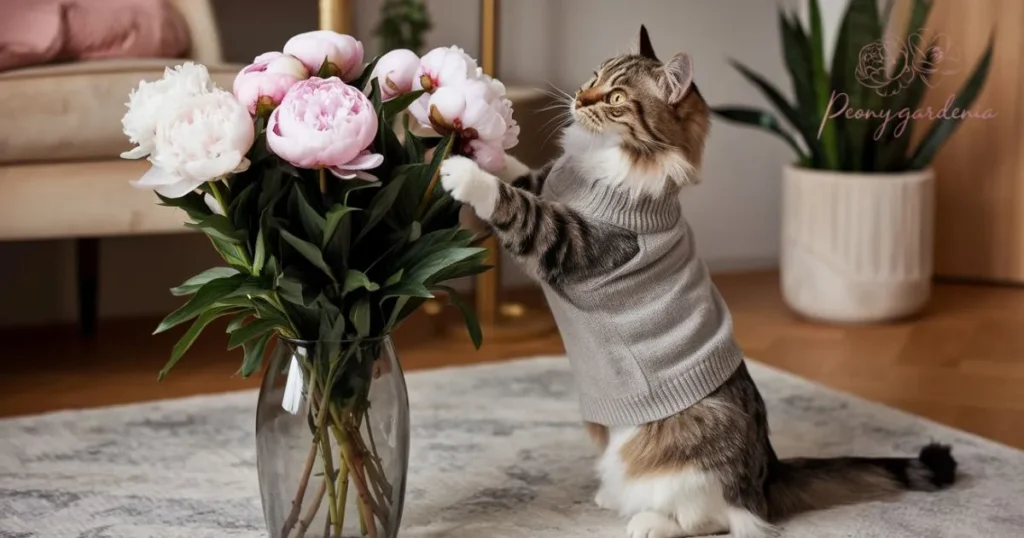
The best way to protect cats from peony poisoning is by keeping the plants out of their reach. Consider placing peonies in elevated areas where cats cannot climb or access them. Hanging pots or enclosed garden spaces can provide a safer environment. Another approach is to use deterrents, such as sprays designed to repel cats from certain areas.
Training your cat to avoid specific plants is also helpful. By setting clear boundaries and taking preventive measures, you can ensure your feline companion stays safe. Creating a cat-friendly space with non-toxic plants is an excellent alternative.
Are There Cat-Safe Alternatives to Peonies?
There are plenty of beautiful and safe plants that can brighten your home or garden without posing risks to cats. Spider plants, for instance, are non-toxic and easy to care for. Cat grass is another great option that provides both aesthetic appeal and a fun snack for your cat.
Other safe choices include parlor palms and Boston ferns, which add greenery without endangering pets. Before bringing any plant into your home, research its safety for cats. Choosing pet-friendly plants ensures peace of mind and a harmonious environment where both you and your cat can thrive.
Cat Chin Mites
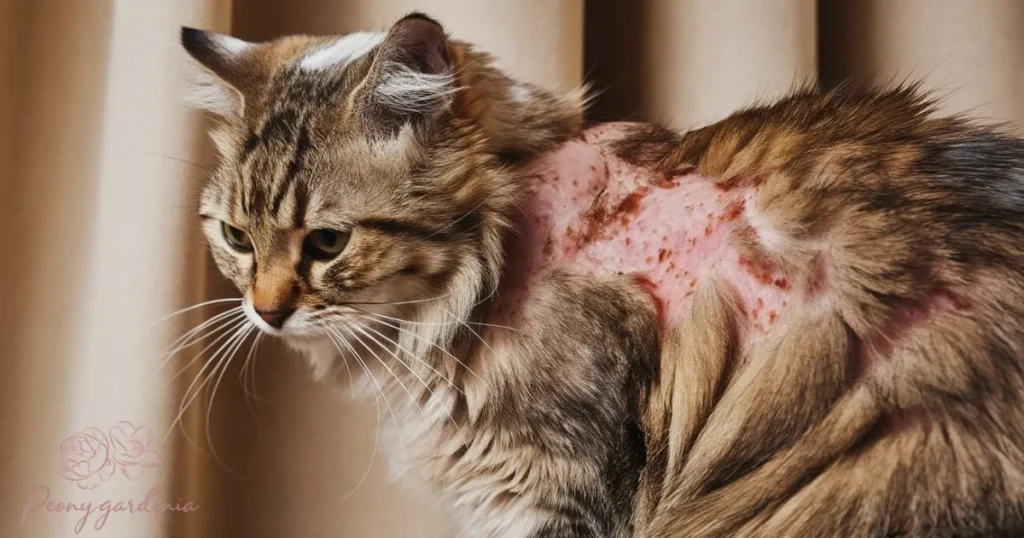
Cat chin mites are tiny parasites that can cause significant discomfort for your feline friend. These microscopic creatures live on the skin and are most commonly found around the chin and face. They can lead to irritation, redness, and itching, causing cats to scratch excessively. Over time, the affected area may develop sores or scabs.
Chin mites are more prevalent in cats with weakened immune systems or those exposed to unsanitary conditions. Regular grooming and hygiene practices can help prevent infestations. Understanding the signs and symptoms of chin mites is the first step toward effective treatment and prevention.
Symptoms of Cat Chin Mites
Cats with chin mites often show visible signs of skin irritation. The chin area may appear red and inflamed, with small scabs or flakes present. Some cats experience hair loss in the affected regions due to constant scratching. You might also notice your cat rubbing its face against surfaces to relieve itching.
In severe cases, secondary infections can occur if the skin is broken. If you observe any of these symptoms, consult a veterinarian promptly. Early diagnosis and treatment are crucial for managing the condition effectively and ensuring your cat’s comfort and health.
Keeping Your Cat Safe and Healthy
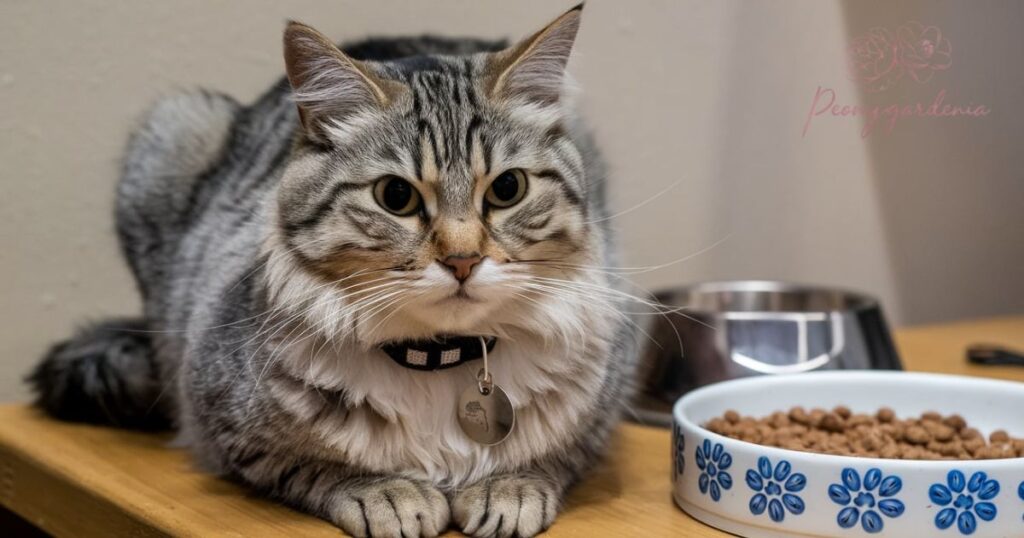
Maintaining a safe and clean environment is essential for your cat’s well-being. Removing toxic plants like peonies and addressing health concerns such as chin mites are vital steps. Regular vet check-ups, proper grooming, and a balanced diet contribute to a happy and healthy cat.
Observing your cat’s behavior can also provide valuable insights into its health. Any sudden changes, such as loss of appetite or unusual scratching, should be investigated promptly. By staying proactive and informed, you can ensure your cat enjoys a long, comfortable life free from avoidable risks and illnesses.
Consulting Your Veterinarian
Your veterinarian is the best source of advice regarding your pet’s safety. They can provide guidance on toxic plants and poisoning symptoms. Regular check-ups help monitor your cat’s health. Discuss any concerns about your cat’s behavior or environment.
A proactive approach ensures early detection of potential issues. Building a strong relationship with your vet ensures your pet’s well-being. Trusting their expertise can prevent many health complications. Always consult your vet if you’re unsure about a plant’s safety. Their advice is invaluable in keeping your cat healthy.
Final Thoughts
Peonies may be beautiful additions to a garden, but they are not safe for homes with cats. Their toxic properties can cause significant health issues if ingested. To keep your feline friend safe, it is best to avoid having peonies safe for cats or ensure they are inaccessible.
Instead, consider cat-friendly plants that add beauty to your space without posing risks. Additionally, staying vigilant about potential health problems, such as chin mites, ensures your cat remains comfortable and healthy. Always consult a veterinarian for expert advice and make informed choices to create a safe, pet-friendly environment.
FAQs
Are peonies toxic to cats?
Yes, peonies contain a toxin called paeonol that can harm cats if ingested.
What are the symptoms of peony poisoning in cats?
Symptoms include vomiting, diarrhea, lethargy, and abdominal discomfort.
How can I prevent my cat from eating peonies?
Keep peonies out of reach, use deterrents, or opt for cat-safe plants instead.
What should I do if my cat ingests a peony?
Contact your veterinarian immediately for guidance and treatment.
What are some safe plant alternatives to peonies?
Cat-friendly options include spider plants, cat grass, and Boston ferns.
